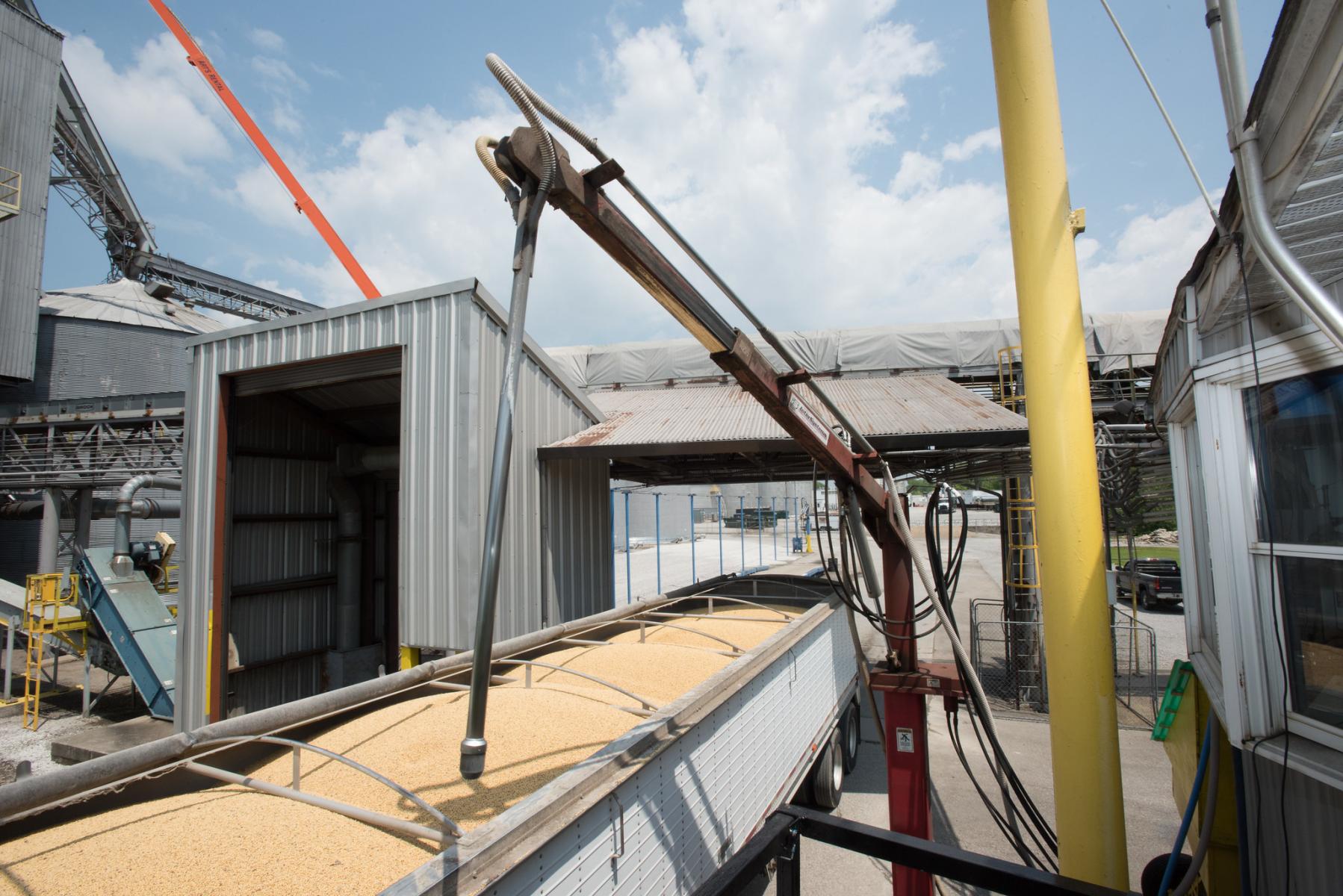
April 20, 2020
There are several ways to lease farmland. Many landlords and tenants commonly choose cash or crop share leases across Nebraska. An alternative rental arrangement, referred to as “bushel” leases, may be receiving more attention due to uncertainty and variability in crop prices or yields. Due to the nature of bushel lease agreements, there may be a considerable amount of variability in the lease terms.
Under a bushel lease arrangement, the tenant pays the landlord a fixed or percent of the crop yield in return for the use of land. The primary two types of bushel leases include guaranteed bushels per acre or a percentage of production.
Guaranteed bushels
Under this lease arrangement, tenants may offer their landowners a “guaranteed” or “flat” bushel rate, i.e., tenants will deliver xxx bushels to the elevator at harvest and place the commodity under the landowner’s name. Guaranteed bushel lease agreements operate similar to a cash lease. If you enter into a flat bushel rent agreement, the landowner would not be eligible for crop insurance or federal farm program payments. Landowners would not typically pay input expenses, but be responsible for land taxes and irrigation equipment ownership expenses1.
One way to calculate the guaranteed bushel rental rate takes the current cash rental rate in the area divided by the anticipated marketing price of the grain. For example, in eastern Nebraska, dividing the dryland cropland rate of about $200 per acre by the $3.50 per bushel of corn equals 57 bushels per acre. Under this case, the landlord would need about 57 bushels per acre for the bushel rent to be equivalent to the cash rent.
Another way to estimate a guaranteed bushel rent takes the anticipated returns from a crop share for a landlord divided by the anticipated marketing price of the grain. For example, after paying input expenses, the landlord nets about $175 per acre. If the anticipated price for corn maybe $3.50 per bushel, a landlord would need approximately 50 bushels per acre for the bushel rent to be equivalent to the crop-share rent.
Tenants in a flat bushel rate agreement typically may be responsible for covering the seed, energy for irrigation, crop insurance, and “yield increasing inputs” like fertilizer, insecticide, fungicide, and herbicide. They may also be responsible for the irrigation equipment maintenance, labor, field operations, harvesting, and transportation of the crop to a specified location (bin, elevator, or sale barn). Each lease circumstance may be different and the exact expense covered by each subject to the rental negotiation.
If the tenant produces significantly more than expected, they receive the benefit of the additional production. Furthermore, if additional income is derived beyond the main crop, the tenant also receives this income. For example, if the tenant subleases the cornstalks for grazing, they would receive all of the grazing income.
A contingency clause should be included in a guaranteed bushel lease agreement for yield shortfalls. If the tenant cannot deliver the guaranteed number of bushels, they could purchase grain from another farmer to fulfill their agreement, or pay the landlord in cash to make up the difference.
Percentage of production
Rather than setting a flat bushel rate per acre, some tenants offer a percentage of production per acre. Often, these are set up similar to crop share agreement, with a lower percentage going to the landowner and are sometimes referred to as a flex lease. For example, instead of the tradition 1/3 share going to the landlord, landlords in western Nebraska are accepting 15-20% of the crop but not paying input expenses. In eastern Nebraska, the traditional crop share division might be 40-50% of production going to the landlord, and alternatively, the landlord could accept 25-30% of the crop while paying no input expenses. In many cases, the percent of production can vary by crop. Factoring in budgets and current prices, corn might typically be 3-5% less than soybeans. You will need to calculate each crop separately.
In this scenario, landlords still bear responsibility for their share of crop insurance, land taxes, and irrigation equipment ownership expenses1. Landowners may also be eligible for crop insurance indemnities or federal farm program payments.
Tenants bear responsibility for their share of the crop insurance, all of the seed, energy for irrigation, and yield increasing inputs. They are also responsible for the irrigation equipment maintenance, labor, field operations, harvesting, and transportation of the crop to a specified location.
If additional income is derived beyond the crop, the proceeds would typically be split according to the share. For example, if the crop residue is balled off and sold, both the landlord and tenant should receive their share of the revenue.
Why a bushel rent?
Bushel rents allow landowners to continue to have control over marketing a crop without having to pay input expenses. This exposes the landowner to price risk, forcing them to experience the highs and lows of the market.
Tenants may favor bushel leases, as they do not require upfront cash to the landowner. This may be an advantage for them when trying to manage their cash flow.
Bushel rent agreements allow both parties to control the timing of grain sales for tax management purposes.
Bushel rent considerations
One of the challenges inexperienced landlords have with a bushel rent arrangement involves marketing their share of the product. To pay for expenses, like taxes, landlords need to be comfortable marketing commodities.
Tenants renting properties using a bushel rent lease must design a marketing strategy that estimates the probability of production shortfalls. If a tenant pre-sell grain before harvest, selling more grain than they produce may result not only in buying back grain from the elevator but also potentially paying the landowner for the bushel shortfa
Bushel agreements provide an alternative way to rent farmland. Keeping lease arrangement in writing remains a good practice for contractual agreements. To view example written lease agreements, please visit https://aglease101.org/DocLib/
1Depreciation, interest, taxes, repairs and insurance.
By Jessica Groskopf
Associate Extension Educator